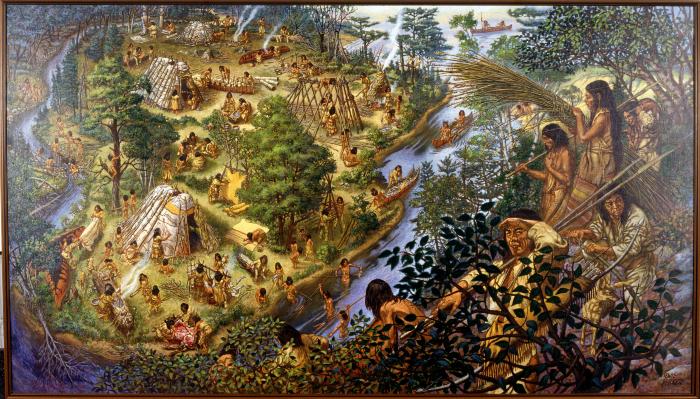Mi'kmaq at Malagawatch, pre-1500
X.114.11
The painting is an aerial view of Malagawatch, which is located on the Bras d’Or Lake, Cape Breton. The area is one of the oldest settlements of the Mi’kmaq who lived in an annual cycle of seasonal movement between dispersed interior winter camps and larger coastal communities during the summer.
The mural depicts the (pre-contact) everyday activities of the indigenous Mi’kmaq, such as building canoes and the processing of moose meat and hides. Throughout the Maritimes moose was the most important animal to the Mi’kmaq and it was used as a source of meat, clothing and cordage, which were all crucial commodities. In the upper right of the mural, figures can be seen cutting sweet grass and in the centre frame men are emerging from a sweat lodge. Both of these activities are important aspects within Mi’kmaq religious ceremonies.
In order to highlight the diverse customs and traditions within Mi’kmaq culture, Parker has condensed them into a single scene. These activities would normally take place over the course of an entire season. The time period of the mural is between spring and early summer, when the Mi’kmaq people would start setting up their camp on the Bras d’Or. In order to create accurate sketches of the area Lewis Parker flew over the area in an airplane.
Just left of the centre, children can be seen playing a game called Waltes, which is a dice game thought to be of pre-Columbian origin. The Waltes dish itself was considered to be important within Mi’kmaq mythology. When filled with water and left overnight, its appearance the following morning would reveal knowledge
